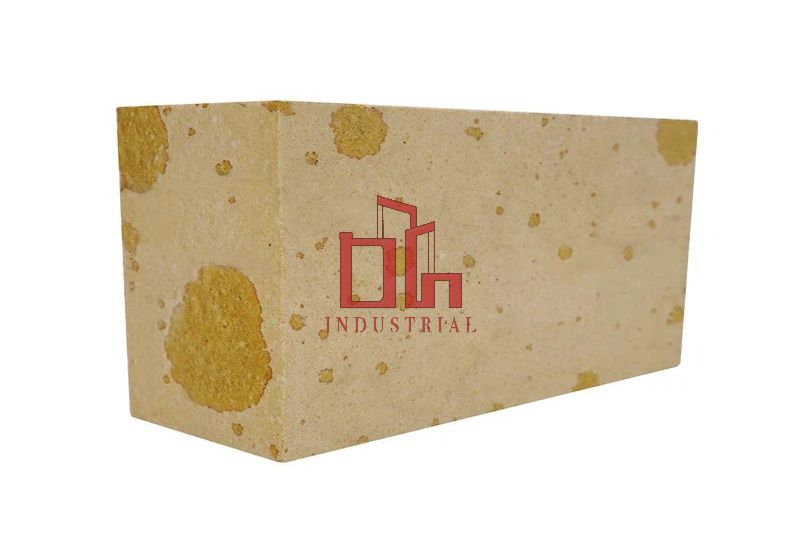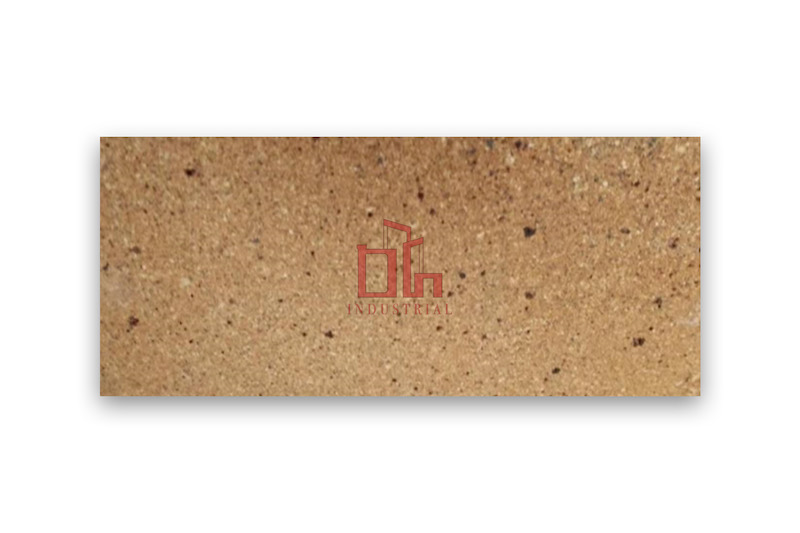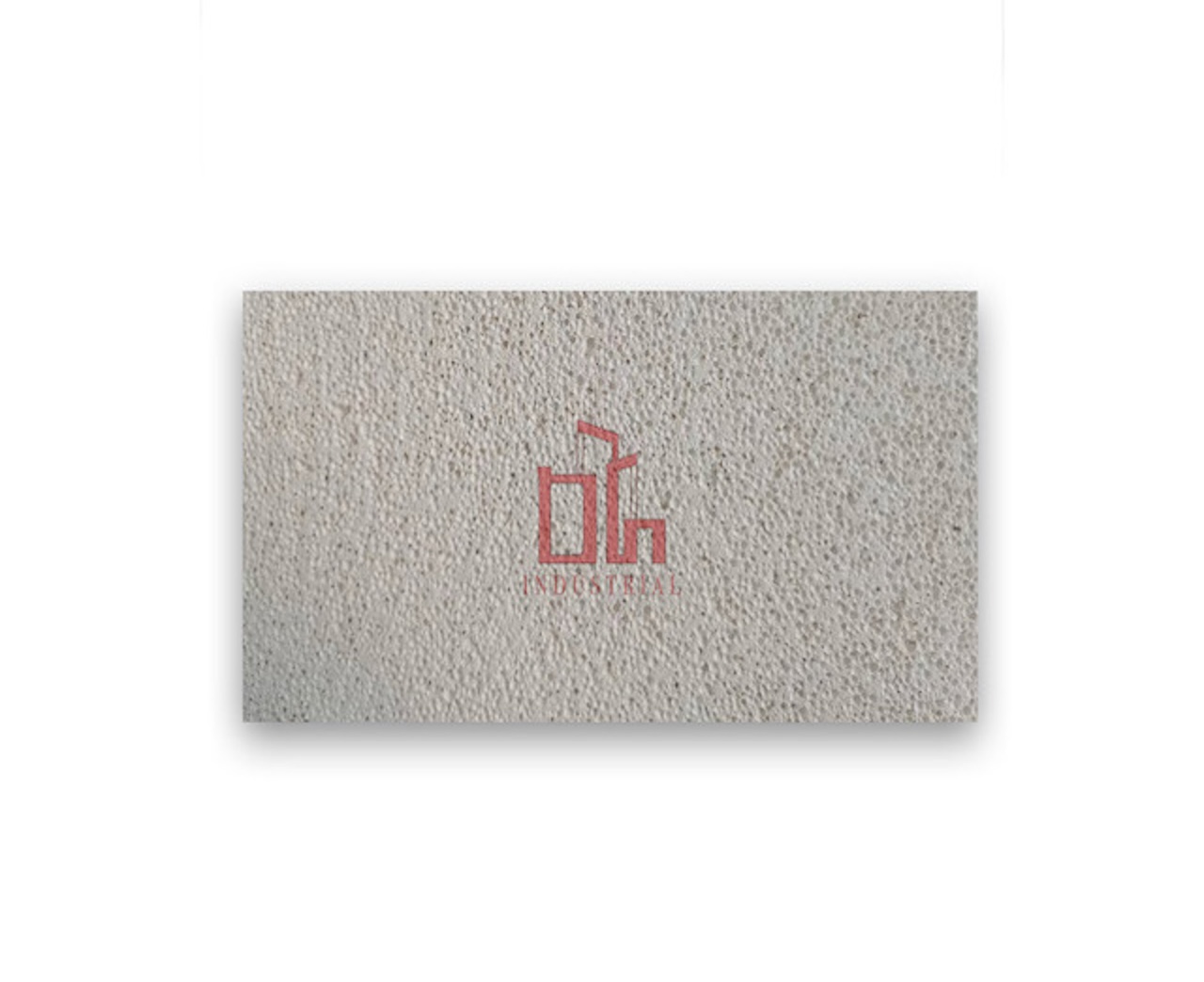In the configuration design of glass kiln lining, shaped refractory bricks are mainly used. According to the working conditions of different parts of the glass kiln, the materials and performance of the refractory bricks used are also different. The following are the 9 most commonly used refractory bricks for glass kiln linings:
1. Silica bricks
Silica bricks are acidic refractory materials. Silica bricks for glass kilns are siliceous refractory products mainly made of phosphotquartz for masonry of high-temperature parts of glass kilns. Their load deformation temperature is relatively high, with a fluctuation range of 16401680℃, which is close to the melting point of phosphotquartz and cristobalite (1670℃, 1713℃). High-quality silica bricks have the characteristics of high purity and density, high load softening temperature, low reburning change, good high temperature creep resistance, high compressive strength at room temperature, reasonable mineral phase composition, low true density, and precise size. As the current photovoltaic glass kilns are becoming larger and larger, the glass melting temperature is also high. Silica bricks are limited by low refractoriness (16901730℃) and poor thermal shock stability (14 times of heat exchange in water), and cannot meet the requirements of the large crown of the melting part, but the upper structure of the cooling part has become the only choice. The selection of its physical and chemical indicators can be seen on the product details page of silica bricks.

2. Clay bricks
Clay bricks are acidic refractory materials. As the Al2O3 content in the bricks increases, its acidity gradually weakens, and its thermal conductivity is the lowest among all refractory materials. Although its refractoriness is as high as 1700℃, its load softening temperature is only about 1300℃. When it is eroded by a large amount of R2O, the softening temperature will further drop to about 1050℃. Therefore, it cannot bear weight and pressure when used at high temperatures. The thermal expansion rate of clay bricks is the smallest among commonly used refractory materials. At the same time, due to the fine crystals, small pores and uniform distribution of clay bricks, stress is easier to be buffered, so it has strong resistance to thermal shock in a wide range and can be used for the selection of important parts of kilns such as flues. The selection of its physical and chemical indicators can be seen on the product details page of clay bricks.

Alumina silicate refractory materials with Al2O3 content greater than 48% are collectively referred to as high-alumina refractory materials. According to the amount of Al2O3 content, they are divided into three grades:
Grade I: Al2O3>75%;
Grade II: Al2O3 60%75%;
Grade III: Al2O3 48%60%.
In the range of Al2O3 content less than 71.8%, with the increase of Al2O3 content, the main crystal phase mullite in high-alumina products increases; in the range of Al2O3 greater than 71.8%, with the increase of Al2O3 content, the amount of mullite decreases and the amount of corundum increases. The refractory performance of the product increases with the increase of Al2O3 content. Compared with clay refractory materials, high-alumina refractory materials have the outstanding advantages of high refractoriness and load softening temperature. High-alumina refractory products have higher thermal conductivity than clay products. The thermal shock resistance of high-alumina refractory products is between that of clay products and silica products, and can be used as retaining bricks for the insulation layer of the glass furnace.
Compared with clay bricks, sillimanite bricks and mullite bricks have higher high-temperature load softening points, dense fine-grained structures, and are not easy to cause bubbles in glass liquid, which are very suitable for the discharge port structure.
The main crystal phase of mullite bricks is mullite. The refractoriness of mullite is about 1850℃, the load softening temperature is high, the high-temperature creep rate is low, the thermal shock resistance is good, and the acid slag erosion resistance is good. It can be selected as the lower structure of the vertical flue and the inner surface of the horizontal flue.

Fused mullite uses high-alumina bauxite as raw material, and different bauxites are mixed into the composition of mullite (3Al2O3-2SiO2), with a mass percentage of: Al2O372%, SiO2 28%. The main crystal phases are mullite and corundum, and the glass phase is filled between the crystal phases. Its resistance to glass liquid erosion is stronger than that of sintered refractory materials, but not as good as that of fused refractory materials. Adding a small amount of zirconium dioxide (7%8.5%) can make the mullite crystals smaller and the brick structure dense, and the mullite increases to 60%70%, which relatively reduces the content of the glass phase and reduces the cracks of the product. Fused mullite bricks have a low thermal expansion coefficient, good thermal shock resistance, and strong resistance to glass liquid erosion.



